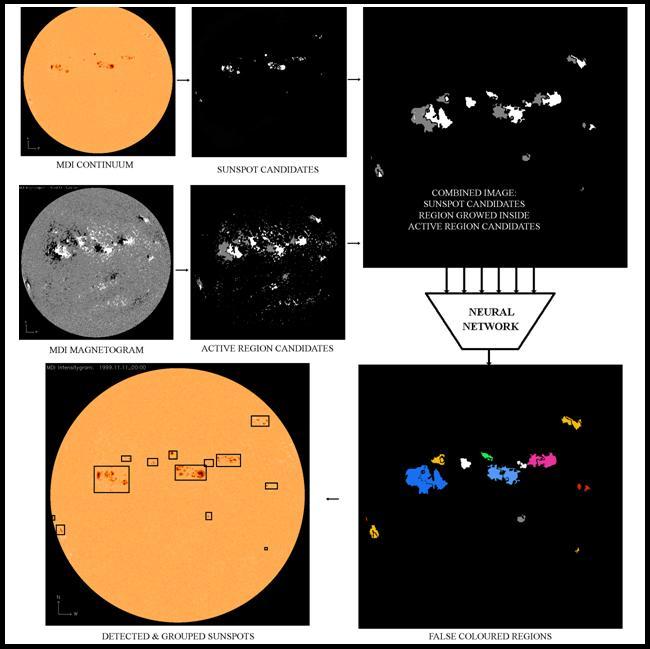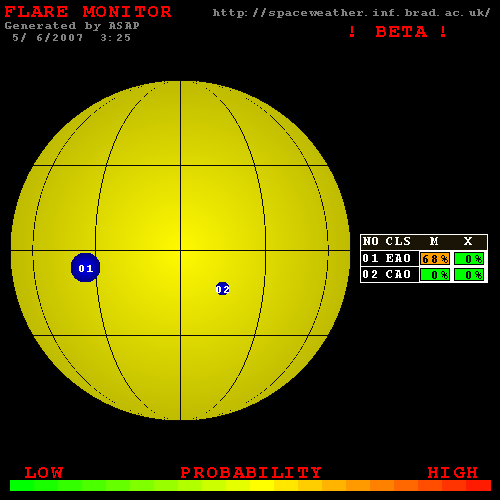Automated Solar Activity Prediction (ASAP)
What is ASAP?
Atomated Solar Activity Prediction (a.k.a ASAP) is a system proposed to predict flares (Figure below shows the currently completed part) and CMEs in near real-time. ASAP currently works for flare prediction and further work on CMEs continues.

How do we predict flares?
We use SOHO/MDI (SDO/HMI) Continuum and Magnetogram images to detect sunspots and find their McIntosh classifications. These classifications are fed to the learning models, which were previously created in [Qahwaji and Colak, Solar Physics, 2007], to provide real-time prediction for the possible occurrence of flares. The flare prediction system can be described in three stages:
- Sunspot grouping.
- Detection of sunspot candidates from MDI continuum images using morphological image processing algorithms.
- Detection of active region candidates from MDI magnetogram images using morphological image processing algorithms. The MDI magnetogram images show the magnetic fields of the solar photosphere, with black and white areas indicating opposite magnetic polarities. These areas are detected separately and combined afterwards to determine the active region candidates.
- Applying region growing to combine sunspot and active region candidates.
- Using neural networks to combine regions of opposite magnetic polarities in order to determine the exact boundaries of sunspot groups.

- McIntosh-based classification.
- Extracting local features from every sunspot in every group using image processing and neural networks.
- Extracting the length, tallness, and area of the sunspot.
- Using neural networks to decide the type of penumbra (i.e., Mature or Rudimentary) and whether the sunspot is Symmetric or Asymmetric.
- Extracting features from each sunspot group using image processing. The extracted features are length, largest spot, polarity and distribution.
- Applying all the extracted features to a decision tree to determine their McIntosh classification.

- Extracting local features from every sunspot in every group using image processing and neural networks.
- Flare prediction using Neural Networks.
- The publicly available sunspot group catalogue and the solar flare catalogues were investigated to associate flares with the sunspots that caused them. The association is determined based on the location (i.e., same NOAA number) and timing information.
- A Neural Networks is optimised, trained using this association information. The input for NNs are composed of sunspot group classification (McIntosh) and sunspot areas. Two different Neural Networks are applied.
- One for determining flaring possibility.
- One for determining probability of flare type.
- Two neural networks are combined to produce a hybrid system to give flaring probability of each sunspot group and their flare intensity probabilities.
How accurate our predictions?
Accuracy of our predictions depends mostly on accuracy of each stage. We have a accuracy of ~95% on sunspot grouping, ~80% on sunspot group classification and ~90% on flare prediction depending on correct classification. In total this means we have a succes rate of ~70% on final flare prediction when we combine all stages.